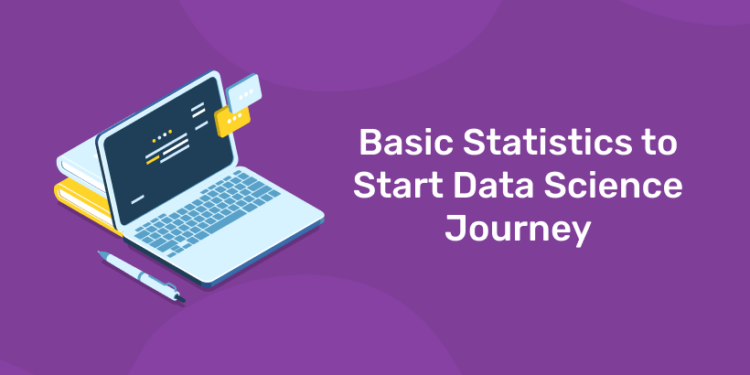Table of Contents
A crucial part of data analytics and machine learning is statistics. Finding hidden patterns through data analysis and visualization is made easier. Learning programming and statistics together should be your first step if you are interested in machine learning and want to advance your career in this field. You can discover basic statistics for machine learning principles in this article. We will cover important data types and major four levels of data to learn before getting deep into the data science field.
Start your Data Science Journey with Expert Mentors! Get a free Demo Here!
Data Types
A data type is a classification that specifies which type of value a variable has in programming. The kinds of operations (mathematical, logical, etc.) that can be carried out without producing errors are also specified by a data type. There are essentially two forms of data:
Quantitative as well as qualitative
Qualitative Data:
The definition of qualitative data states that it can be subjectively observed. In other words, it relates to the qualities and ways in which an object can be described, including its scent, form, texture, and colour. You work with qualitative data while categorizing anything based on its features. Both of these are categorical and numerical.
Quantitative Data:
Quantitative data is information that can be measured using numbers. A numerical value can be assigned to an object if its dimensions, such as its length, width, and height, are measured. You are therefore working with a quantitative data set.
You can further separate quantitative data into two categories: discontinuous and discrete.
When the count is more specific and includes integers, we refer to the data as being discrete. The number of students in a class is discrete data because it will always be a whole number, which will help you understand. It will therefore always be a 30, 56, etc.
Continuous data can be split up or decreased to produce better or more precise findings. We can measure an object’s height to obtain more accurate scales, such as meters, centimeters, millimeters, and so forth, for better understanding.
The Four Levels of Data
1: Which of the following algorithms is most suitable for classification tasks?
The four different levels of measurements are listed in descending order of precision as follows:
Quantitative Level
Nominal
The first level of measurement is referred to as the nominal level.The variable’s numbers are only utilized at this level to categorize the data. The use of words, letters, and alphanumeric symbols is permitted at this level of measurement. The person belonging to the female gender might be classified as F, the person belonging to the male gender could be classified as M, and transgender people could be classified as T in the event where there exist data regarding people belonging to three separate gender categories. The nominal level of measurement is this form of classification for assigning.
Looking for a Data Science Career? Explore Here!
Ordinal
This is the second level of measurement, showing an ordered relationship between the observed variables. If a student receives the class’s highest grade of 100, he or she will be given the first rank. The second student, who had the second-highest score of 92, was given the second position, followed by the third student, who received the third-highest score of 89. An ordering of the measures is indicated by the ordinal level of measurement.
Quantitative Level
Nominal
The distance between each interval on the scalar equivalent along the scale from low interval to high interval is specified. For instance, an interval level measurement could be the measurement of a student’s anxiety between a score of 10 and 11. This range applies to students who score between 40 and 41 as well.
Ratio
In this level of measurement, the observation can have a value of zero in addition to equal intervals. This scale distinguishes these measurements from others of its kind. Even though the characteristics resemble those of an interval level of measurement. The division between the scale’s points has an equal distance between them in the ratio measurement.
For instance, tally, weight, height, etc.
Start your Data Science Journey with Expert Mentors! Get a free Demo Here!
Wrap up
The basic of data science is statistics. Hence if you are interested to start your data science journey, you need some important statistical understanding. With this blog we have covered a minimal but powerful statistical topic such as data types and its levels. With our other articles, we will be covering all other important statistical measurements that you need to understand on your machine learning path.












